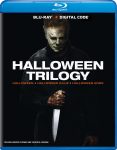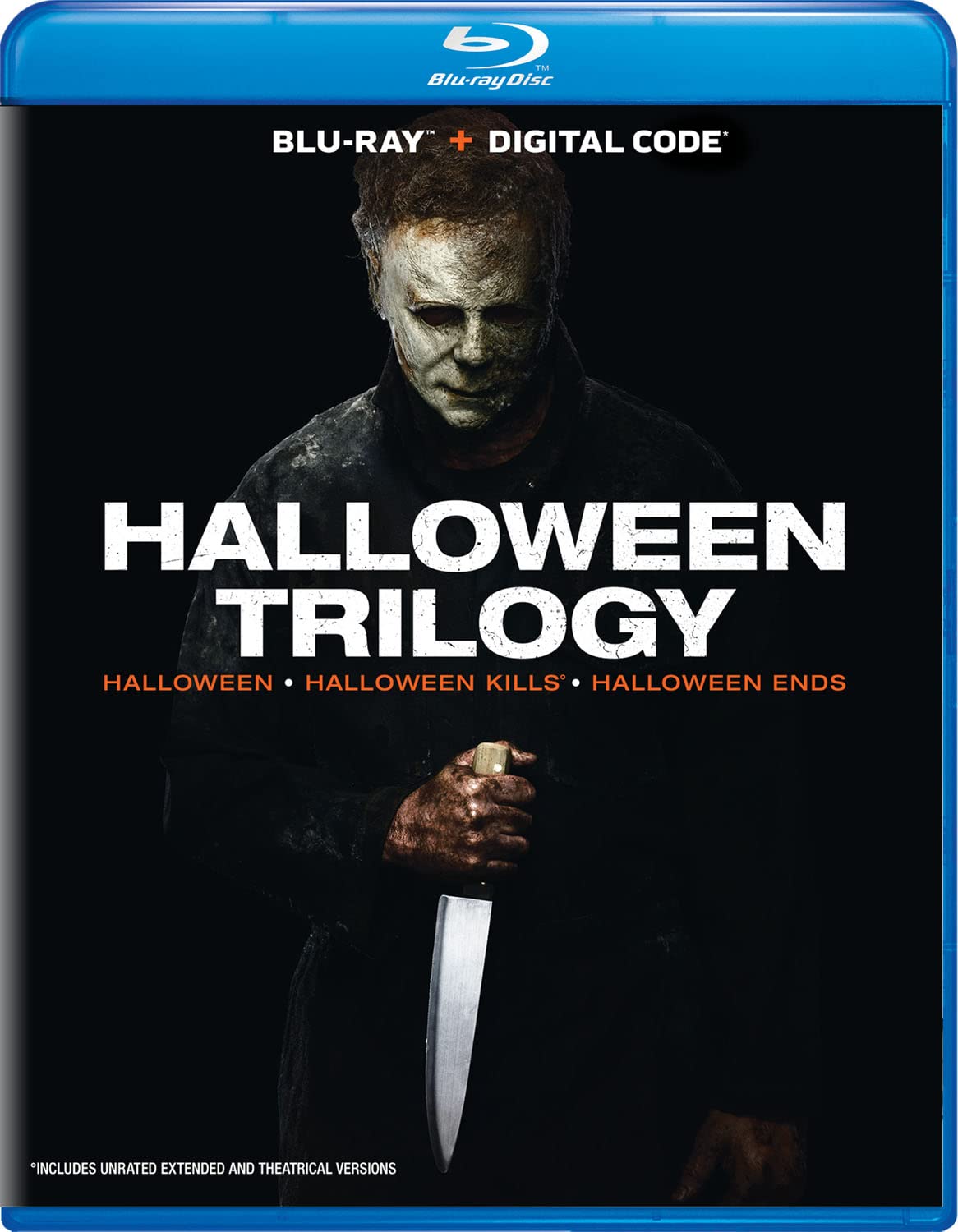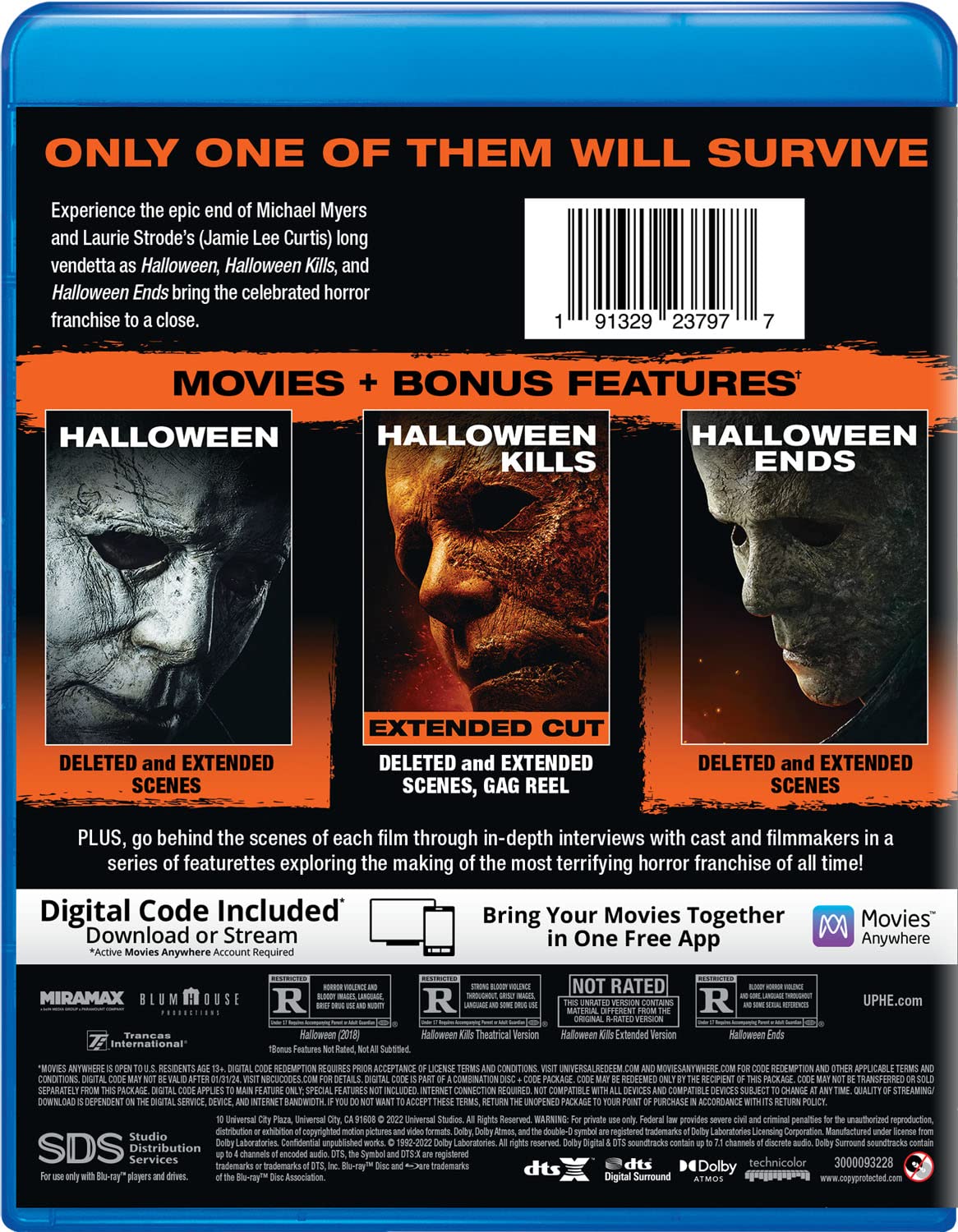
Halloween Trilogy (Halloween / Halloween Review Halloween Movie – Oemiu
The Enduring Legacy of the Halloween Trilogy
The year is 1978. The landscape of horror cinema is forever altered. A masked figure, devoid of humanity, emerges from the shadows, forever etching himself into the collective consciousness as Michael Myers. John Carpenter’s “Halloween” isn’t just a movie; it’s a cultural phenomenon, a masterclass in suspense, and the cornerstone of a franchise that continues to haunt our screens. This article delves into the original Halloween trilogy – “Halloween” (1978), “Halloween II” (1981), and “Halloween III: Season of the Witch” (1982) – exploring their impact, their strengths and weaknesses, and their enduring appeal to horror fans. We will also touch on the question of ‘Halloween Movie’ and its place in the genre. It’s a story of innovation, evolution, and the terrifying power of the Boogeyman.
The Genesis of Fear: Carpenter’s “Halloween” (1978)
John Carpenter’s “Halloween” isn’t just a slasher film; it’s a symphony of suspense. Its brilliance lies not in excessive gore, but in the artful manipulation of atmosphere, shadow, and sound. The film’s low budget became an asset, forcing Carpenter and his team to rely on ingenuity and creativity to craft an unforgettable horror experience. Dean Cundey’s masterful cinematography paints Haddonfield, Illinois, as a seemingly idyllic suburban landscape, a stark contrast to the evil lurking beneath the surface. Michael Myers, “The Shape,” is presented as an almost supernatural force, his motivations opaque, his presence an unnerving specter that stalks Laurie Strode (Jamie Lee Curtis) and her friends. The iconic score, composed by Carpenter himself, is more than just background music; it’s a character in its own right, a relentless, minimalist theme that amplifies the tension and foreshadows the impending terror.
The success of “Halloween” can be attributed to several key factors. Firstly, its simplicity. The story is straightforward: a psychopathic killer escapes from a mental institution and returns to his hometown to terrorize teenagers on Halloween night. This simplicity allows the film to focus on building suspense and creating a sense of dread. Secondly, the film’s relatability. Laurie Strode is not a superhero or a seasoned fighter; she’s an ordinary teenager, making her someone the audience can easily identify with. Her fear and vulnerability are palpable, making her survival all the more satisfying. Thirdly, the film’s groundbreaking use of the “point-of-view” shot, allowing the audience to see the world through Michael Myers’ eyes, creating a sense of unease and complicity. The low budget meant a focus on practical effects, which, despite their age, hold up remarkably well, especially when compared to some of the more CGI-heavy horror films of recent years. It’s a testament to the power of practical effects and clever camerawork. It established many of the tropes that would define the slasher subgenre for decades to come, making it a truly influential “Halloween Movie.”
| Aspect | Description |
|---|---|
| Director | John Carpenter |
| Year Released | 1978 |
| Budget | $325,000 |
| Box Office | $70 million |
| Key Elements | Suspense, minimalism, iconic score, relatable characters |
## Continuing the Nightmare: “Halloween II” (1981)
Following the immense success of the original, “Halloween II” picks up immediately after the events of the first film. Laurie Strode is rushed to the hospital, while Dr. Loomis continues his relentless pursuit of Michael Myers. This sequel expands upon the mythology of Michael Myers, revealing a crucial piece of information: Laurie Strode is Michael’s sister. This revelation, while controversial among some fans, adds a new layer of complexity to their relationship and provides a (somewhat convoluted) explanation for Michael’s relentless pursuit of her. “Halloween II” ramps up the gore and violence, reflecting the changing tastes of horror audiences in the early 1980s. The hospital setting provides a claustrophobic and unsettling backdrop for the mayhem that ensues.
While “Halloween II” is a competent slasher film, it lacks the subtlety and suspense of its predecessor. The increased gore and violence, while satisfying to some, detract from the psychological horror that made the original so effective. The revelation of Laurie’s familial connection to Michael also diminishes the randomness of his evil, making him seem less like an unstoppable force and more like a product of his family history. Despite these criticisms, “Halloween II” remains a popular entry in the franchise, offering a satisfying continuation of the story and providing closure to the initial narrative arc. It solidified the popularity of the Halloween Movie series, guaranteeing more installments to come. The film also benefits from the return of Jamie Lee Curtis and Donald Pleasence, who deliver strong performances as Laurie Strode and Dr. Loomis, respectively. The score, once again composed by John Carpenter, retains its iconic sound, further enhancing the film’s atmosphere.
* **Pros:**
* Continues the story directly from the first film.
* Features strong performances from Curtis and Pleasence.
* Ramps up the gore and violence for fans of slasher films.
* **Cons:**
* Lacks the subtlety and suspense of the original.
* The revelation of Laurie’s familial connection to Michael feels contrived.
* The increased gore detracts from the psychological horror.
## A Bold Departure: “Halloween III: Season of the Witch” (1982)
“Halloween III: Season of the Witch” is arguably the most controversial entry in the original trilogy, and perhaps even within the entire franchise. This film dares to break from the established mythology of Michael Myers and Laurie Strode, presenting an entirely new story with no connection to the previous films. Instead, “Season of the Witch” tells the story of Dr. Daniel Challis, who investigates the mysterious death of a patient and uncovers a sinister plot involving a Halloween mask manufacturer and a pagan cult. The cult plans to use the masks to unleash a deadly curse on children across the country.
The absence of Michael Myers is the primary reason for the film’s divisive reception. Many fans felt betrayed by the lack of continuity and struggled to accept a “Halloween” movie without its iconic killer. However, “Season of the Witch” has gained a cult following over the years, with some appreciating its originality and its exploration of themes such as consumerism, corporate greed, and the dangers of unchecked technological advancement. The film’s unsettling atmosphere, its memorable score (composed by John Carpenter and Alan Howarth), and its bizarre storyline contribute to its unique appeal. While not a traditional slasher film, “Season of the Witch” offers a chilling and thought-provoking horror experience that stands apart from the rest of the franchise. It dared to challenge the expectations surrounding the Halloween Movie title.
| Feature | Halloween (1978) | Halloween II (1981) | Halloween III (1982) |
|---|---|---|---|
| Main Villain | Michael Myers | Michael Myers | Conal Cochran |
| Plot | Michael Myers stalks and kills teenagers. | Michael Myers continues his killing spree in a hospital. | A doctor investigates a mask company’s sinister plot. |
| Connection to Previous Films | First film in the series | Direct sequel to the first film | No connection to the previous films |
| Genre | Slasher, Horror | Slasher, Horror | Science Fiction Horror, Thriller |
## The Lasting Impact of the Trilogy
The original “Halloween” trilogy, despite its varying degrees of quality and its controversial third installment, has left an indelible mark on the horror genre. The first film revolutionized the slasher subgenre, establishing many of the tropes and conventions that would become commonplace in countless horror films to follow. The character of Michael Myers has become an iconic figure in popular culture, a symbol of pure, unadulterated evil. “Halloween II,” while not as groundbreaking as its predecessor, provided a satisfying continuation of the story and further solidified the franchise’s popularity. “Halloween III,” though often maligned, has gained a cult following for its originality and its willingness to break from the established formula.
The trilogy’s influence extends beyond the realm of horror cinema. The films have inspired countless filmmakers, artists, and musicians. The iconic score has been sampled and remixed in various forms of media. The image of Michael Myers’ mask has become a ubiquitous symbol of Halloween. The Halloween Movie legacy, therefore, is more than just a collection of films; it’s a cultural phenomenon that continues to resonate with audiences of all ages. The series has been rebooted and reimagined numerous times, but the original trilogy remains a touchstone for horror fans, a reminder of the power of suspense, atmosphere, and truly terrifying characters. Its endurance speaks volumes about its quality.
FAQ
What makes the original “Halloween” (1978) so iconic?
The original “Halloween” (1978) achieved iconic status due to a confluence of factors. John Carpenter’s masterful direction created an atmosphere of unrelenting suspense, utilizing minimalistic techniques to amplify the terror. The film’s simplicity, focusing on a primal fear of the unknown, resonated deeply with audiences. Michael Myers, “The Shape,” became an unforgettable villain, embodying pure evil with his emotionless mask and relentless pursuit. The iconic score, composed by Carpenter himself, is instantly recognizable and contributes significantly to the film’s unsettling atmosphere. Furthermore, the film’s relatability, featuring ordinary characters in extraordinary circumstances, allowed viewers to connect with the story on a personal level. The low budget and reliance on practical effects also lent a raw and visceral quality to the film, enhancing its impact. This makes it a truly influential Halloween Movie.
How does “Halloween II” (1981) differ from the original?
“Halloween II” (1981) differs from the original in several key aspects. While it picks up immediately after the events of the first film, it escalates the gore and violence, catering to the evolving tastes of horror audiences in the early 1980s. The setting shifts primarily to a hospital, creating a claustrophobic and unsettling environment. The most significant difference is the revelation that Laurie Strode is Michael Myers’ sister, adding a familial connection to their conflict, which some find weakens the original’s concept of random, inexplicable evil. Though it maintains the core elements of the slasher genre, “Halloween II” lacks the subtle suspense and minimalist approach that made the original so groundbreaking. It aims for a more visceral and shocking experience, sacrificing some of the psychological depth of its predecessor.
Why is “Halloween III: Season of the Witch” (1982) so controversial?
“Halloween III: Season of the Witch” (1982) is controversial primarily because it completely abandons the Michael Myers storyline, presenting an entirely new narrative with no connection to the previous films. This departure alienated many fans who expected a continuation of the established mythology. The film’s plot, involving a sinister mask manufacturer and a pagan cult, is drastically different from the slasher elements of the first two films, venturing into science fiction horror territory. This shift in genre and the absence of Michael Myers led to widespread disappointment and criticism. However, over time, “Season of the Witch” has garnered a cult following, with some appreciating its originality and its exploration of different themes, but at the time, its complete divergence from the expected Halloween Movie formula made it a contentious entry.
What are the main themes explored in the Halloween trilogy?
The original Halloween trilogy explores a range of themes. “Halloween” (1978) focuses on the primal fear of the unknown, the fragility of suburban safety, and the pervasive nature of evil. “Halloween II” (1981) delves into themes of family secrets, trauma, and the cyclical nature of violence. “Halloween III: Season of the Witch” (1982) explores themes of consumerism, corporate greed, the dangers of unchecked technology, and the manipulation of cultural traditions for sinister purposes. While each film approaches these themes differently, they all contribute to a broader exploration of societal anxieties and the dark underbelly of seemingly ordinary life.
How has the Halloween trilogy influenced the horror genre?
The Halloween trilogy has profoundly influenced the horror genre, particularly the slasher subgenre. “Halloween” (1978) established many of the tropes that would become staples of slasher films, including the masked killer, the “final girl,” the use of POV shots, and the emphasis on suspense over gore. The success of “Halloween” paved the way for a wave of slasher films in the 1980s, such as “Friday the 13th” and “A Nightmare on Elm Street.” While “Halloween II” followed the established formula, its increased gore levels reflected the evolving tastes of horror audiences. Even the controversial “Halloween III,” despite its deviation from the slasher genre, contributed to the experimentation and diversification of horror storytelling. The trilogy’s impact is undeniable, shaping the landscape of horror cinema for decades to come.
Which film in the Halloween trilogy is considered the best, and why?
“Halloween” (1978) is widely considered the best film in the Halloween trilogy. Its groundbreaking direction, masterful use of suspense, iconic score, and relatable characters have made it a timeless classic. John Carpenter’s ability to create an atmosphere of dread without relying on excessive gore set a new standard for horror films. The simplicity of the story and the effectiveness of the practical effects contribute to its enduring appeal. While “Halloween II” and “Halloween III” have their merits, they lack the originality and innovation that made the first film so revolutionary. “Halloween” (1978) remains a masterclass in horror filmmaking and a benchmark for the slasher genre. It’s a quintessential Halloween Movie that has stood the test of time.
What is the overall legacy of the Halloween trilogy?
The overall legacy of the Halloween trilogy is one of enduring influence and cultural impact. The original “Halloween” revolutionized the slasher genre and established Michael Myers as one of the most iconic villains in horror history. The trilogy, as a whole, has inspired countless filmmakers, artists, and musicians. While “Halloween II” and “Halloween III” have been met with varying degrees of critical acclaim, they have all contributed to the franchise’s enduring popularity. The image of Michael Myers’ mask has become a ubiquitous symbol of Halloween, and the iconic score is instantly recognizable. The trilogy’s themes of fear, evil, and the fragility of suburban life continue to resonate with audiences today. The Halloween Movie franchise, even with its numerous reboots and sequels, owes its success to the foundation laid by this original trilogy.




Price: $24.96 - $19.49
(as of Sep 05, 2025 03:35:09 UTC – Details)




